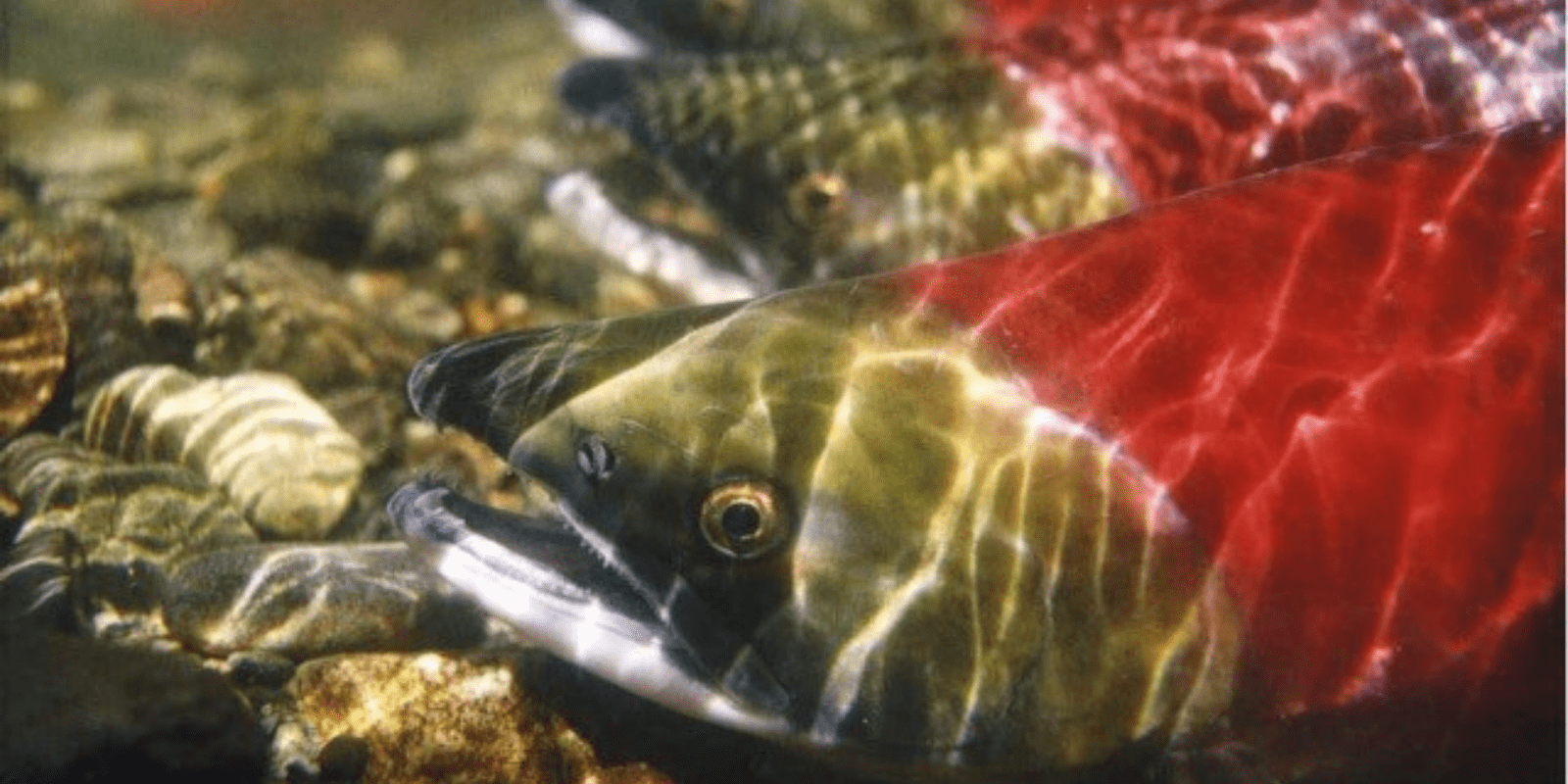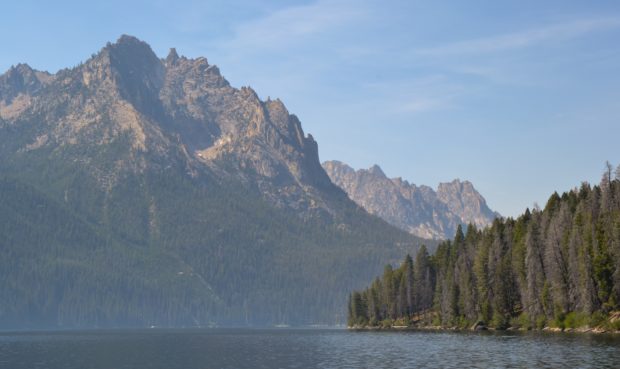We have much more to do and your continued support is needed now more than ever.
The Naturals: Snake River Sockeye Salmon

This spring, in the mountains of central Idaho, several thousand young Snake River sockeye salmon will enter Redfish Lake Creek’s tumble, and be swept seaward. A few months later, in summer and after two or more years at sea, a precious few adult Snake River sockeye will come back, turn right up Redfish Lake Creek, and head to the lake they name.
Fish managers call sockeye born in Redfish Lake natural-origin fish, to distinguish them from hatchery fish. I’ll call them the naturals. They reproduce farther inland and at higher elevations than any sockeye salmon on earth. They are the southernmost sockeye population on earth – far south, for instance, of Alaska’s Bristol Bay sockeye. And, the naturals are the most endangered salmon species in the Northwest, perhaps in North America. Last year, 14 returned from the ocean; the average over the last five years is 17.
The home journey of these four- to five-pound fish is beyond difficult. Entering the Columbia River from the ocean, the naturals transform from saltwater to freshwater fish while swimming 925 miles up-current in the Columbia, Snake and Salmon Rivers. They climb 6,548 feet, dodging predators and hazards. They take almost one-fifth of a year to swim from the Pacific to Redfish Lake, much of it in summer’s hottest water – and eat nothing.
And, since 1975, 320 miles of their migration has been eight straight reservoirs, spaced by eight big dams. It’s the main reason Snake River sockeye were listed as endangered in 1991. Within two years every salmon and steelhead species in the Snake River was on the list. They all must get through these eight dams and reservoirs, twice. Too few now do to even replace themselves, much less recover.
The naturals are silver tinged blue when they enter the Columbia. They are bright red when they reach Redfish Lake two months or more later. Standards to survive in their mountain lake 925 miles from the ocean, are high. The naturals tune to them continuously, in genes and behaviors. Their beauty mirrors their place. Despite their endangerment at our hands, abundance is their natural condition and capability.
Redfish Lake is near the southern edge of eight million acres that comprise the largest, wildest, highest, and best-protected salmon stronghold in the 48 states. Yet its salmon are disappearing. For 25 years I have worked to restore 140 miles of the lower Snake River, far downstream in eastern Washington. The largest river restoration on earth: what an opportunity for eastern Washington and Idaho, for people and salmon.

In early May I will lay advocacy down for a day. The young naturals will be slipping out of their lake into the rush of Redfish Lake Creek to the Salmon River, and then seaward. I won’t see them; they are small in fast tumbling water. If conditions permit, I will walk 2½ miles from Redfish Lake’s outlet down Redfish Lake Creek, skirting a much smaller second lake, and then clambering the steep plunge to the Salmon River. I will wish small fish I can’t see godspeed, ask them to come back, and make my small pledge to their future.
Pat Ford helped found the Save Our Wild Salmon Coalition in 1992 and has been active in advocating for salmon restoration for more than 20 years. He live in Boise, Idaho.
—
Tell the U.S. Army Corps of Engineers that conservation of the Snake River must include solutions to restore abundant salmon runs.
Take Action!





















